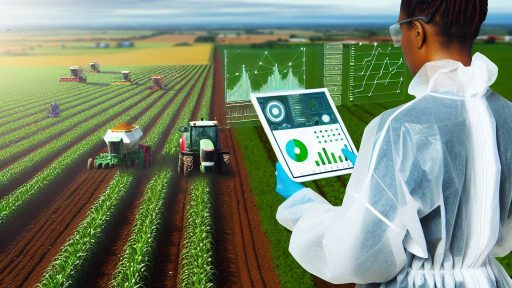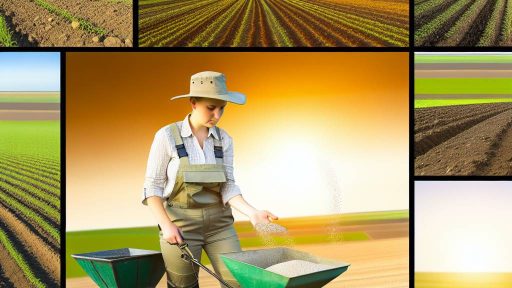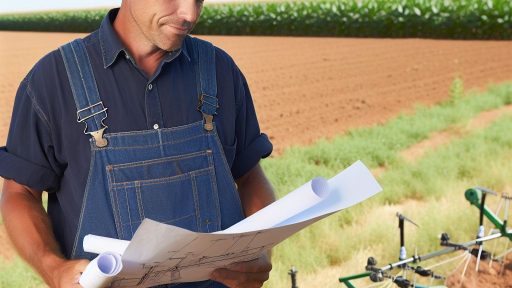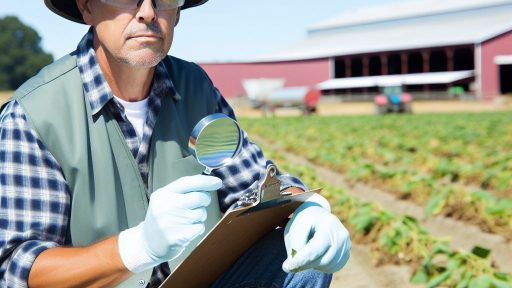Introduction to Conservation Tillage
Definition of Conservation Tillage
Conservation tillage involves farming practices that minimize soil disturbance.
It maintains soil cover to protect against erosion and improve water retention.
This approach contrasts with traditional tillage methods that disrupt soil structure.
Importance of Conservation Tillage
Conservation tillage plays a vital role in sustainable agriculture.
It enhances soil health by promoting beneficial microorganisms and organic matter.
Moreover, it improves water infiltration and retention in the soil.
This method reduces the need for irrigation, conserving water resources.
Benefits for Soil and Water Management
One significant benefit of conservation tillage is reduced soil erosion.
It helps maintain soil moisture levels, especially during dry periods.
Consequently, farmers can achieve higher yields with less water input.
Furthermore, it reduces runoff and enhances water quality.
Adoption and Implementation
Farmers can adopt several techniques related to conservation tillage.
No-till farming is one popular strategy under this umbrella.
Other methods include strip tillage and reduced tillage practices.
Each method offers unique advantages based on the specific farming context.
Transform Your Agribusiness
Unlock your farm's potential with expert advice tailored to your needs. Get actionable steps that drive real results.
Get StartedChallenges and Considerations
While beneficial, conservation tillage is not without challenges.
Farmers may need training to adapt to new practices effectively.
Additionally, there’s a potential for increased pest issues without proper management.
Consideration of local soil types and climate is also crucial.
Overview of Water Retention Challenges in Agricultural Practices
Water retention presents significant challenges in modern agriculture.
Farmers often struggle to maintain adequate moisture levels in their fields.
Many traditional farming methods can lead to soil degradation.
Consequently, farmers face increased irrigation costs and reduced yields.
Various factors contribute to these water retention issues.
Soil Structure and Composition
Poor soil structure adversely affects water absorption and retention.
Soils high in sand tend to drain quickly.
This characteristic causes moisture loss during dry periods.
Conversely, clay soils can become compacted, limiting water infiltration.
Adopting the right soil amendments can improve these conditions.
Climate Variability
Climate change introduces unpredictability in weather patterns.
Periods of heavy rainfall can cause runoff, wasting valuable water.
In contrast, extended droughts stress crops needing consistent moisture.
Farmers must adapt their practices to mitigate these effects.
Land Management Practices
Conventional tillage practices can disrupt soil integrity.
This disruption often leads to increased erosion and water loss.
In addition, monocropping reduces biodiversity necessary for healthy soils.
Implementing diversified cropping systems can enhance resilience.
Water Management Techniques
Effective water management is crucial for overcoming retention issues.
Farmers can utilize rainwater harvesting to seize available resources.
Showcase Your Farming Business
Publish your professional farming services profile on our blog for a one-time fee of $200 and reach a dedicated audience of farmers and agribusiness owners.
Publish Your ProfileEstablishing retention basins offers another viable option.
Additionally, adopting drip irrigation can conserve water use.
These methods empower farmers to respond more effectively to climate challenges.
Types of Conservation Tillage Systems
No-Till System
The no-till system preserves soil structure and health.
This method minimizes soil disruption during planting.
As a result, it enhances water retention in the soil.
Farmers plant directly into undisturbed soil.
This practice also reduces erosion significantly.
Moreover, it increases organic matter in the soil.
Consequently, farmers experience improved yields over time.
Strip-Till System
The strip-till system combines benefits from both no-till and conventional tillage.
This approach loosens only specific strips of soil.
Farmers create narrow seedbeds for planting crops.
This maintains soil health and promotes better water infiltration.
Additionally, strip-till reduces fuel and labor costs.
Farmers can manage weeds and crop residue effectively.
As a result, this system leads to increased soil moisture retention.
Reduced-Till System
The reduced-till system allows for some soil disturbance.
However, it significantly limits the extent of tillage.
This method promotes better soil structure and health.
Farmers prepare the soil less frequently than in conventional methods.
This practice minimizes erosion while enhancing water retention.
Furthermore, reduced-till systems support the growth of beneficial soil organisms.
Ultimately, they provide a balanced approach to crop production.
Discover More: Greenhouse Cultivation for Growing High-Value Vegetables and Herbs
Benefits of Conservation Tillage for Soil Health and Structure
Improved Soil Structure
Conservation tillage enhances soil structure significantly.
This method maintains soil aggregate stability.
As a result, it improves porosity and aeration.
Better soil structure supports root growth.
Consequently, plants can access water and nutrients efficiently.
Increased Organic Matter
Conservation tillage promotes the accumulation of organic matter.
Organic matter increases microbial activity in the soil.
More microbes lead to a healthier soil ecosystem.
Furthermore, organic matter improves soil fertility.
This ultimately enhances crop yields over time.
Enhanced Water Retention
This method significantly boosts water retention capabilities.
Soil covered with residue retains moisture better.
For instance, it reduces evaporation rates during dry spells.
This advantage proves crucial in drought-prone areas.
Farmers notice increased resilience in crops during dry conditions.
Showcase Your Farming Business
Publish your professional farming services profile on our blog for a one-time fee of $200 and reach a dedicated audience of farmers and agribusiness owners.
Publish Your ProfileReduced Soil Erosion
Conservation tillage effectively minimizes soil erosion.
The presence of cover crops protects the soil surface.
Moreover, it limits the impact of rainfall on bare soil.
Consequently, soil loss decreases significantly over time.
This preservation is vital for long-term land health.
Promoting Biodiversity
Healthy soils under conservation tillage support greater biodiversity.
Soil organisms thrive under reduced disturbance.
Additionally, this practice fosters diverse plant life.
More diverse ecosystems enhance resilience against pests and diseases.
In turn, this leads to fewer pesticide applications.
Delve into the Subject: Essential Crop Disease Strategies For Profitable US Farmland Investments
Impact of Conservation Tillage on Soil Moisture Levels
Understanding Conservation Tillage
Conservation tillage significantly alters soil management practices.
This method reduces soil disturbance compared to traditional tillage.
Farmers often adopt it for its numerous benefits.
These benefits include improved water retention and enhanced soil structure.
Water Retention Benefits
Conservation tillage helps maintain moisture levels in the soil.
The practice leaves crop residues on the surface.
These residues reduce evaporation significantly.
As a result, moisture stays in the soil longer.
This leads to improved water availability for crops.
Ssoil Structure Improvement
Healthy soil structure fosters better water infiltration.
Conservation tillage encourages earthworm activity.
Earthworms create channels that enhance water movement through the soil.
This process reduces surface runoff and soil erosion.
Consequently, more water is available for plant roots.
Impact on Crop Yields
Improved water retention often leads to higher crop yields.
Consistent moisture supports plant growth throughout the growing season.
Farmers observing these benefits frequently report increased profitability.
Healthy crops contribute to sustainable food production.
Challenges and Considerations
While conservation tillage offers several advantages, challenges remain.
Soil compaction can occur if not managed properly.
Farmers must adapt their management strategies accordingly.
Proper planning ensures the long-term success of conservation practices.
Explore Further: Greenhouse Construction for Agricultural Land Buyers
Case Studies: Successful Implementation of Conservation Tillage for Water Retention
Overview of Key Case Studies
Diverse case studies illustrate the success of conservation tillage in various regions.
These examples showcase significant improvements in soil water retention and crop yields.
Farmers have adapted their practices based on local conditions and soil types.
Case Study in Iowa
The Anderson Family Farm in Iowa adopted conservation tillage methods in 2018.
They focused on reducing soil disturbance to enhance soil structure.
As a result, they observed a 30% increase in water retention during drought conditions.
Showcase Your Farming Business
Publish your professional farming services profile on our blog for a one-time fee of $200 and reach a dedicated audience of farmers and agribusiness owners.
Publish Your ProfileThis change led to higher yields of corn and soybeans.
Case Study in California
In California’s Central Valley, Garcia Organic Farms implemented strip tillage.
This technique allowed them to minimize soil erosion while maintaining soil quality.
Consequently, they increased water infiltration rates by 25% over five years.
The farm also reported a reduction in irrigation costs due to improved moisture retention.
Case Study in Brazil
In Brazil, Silva Agricultural Cooperative adopted no-till farming across 1,000 hectares.
This method helped restore degraded soil and enhance moisture levels.
The cooperative experienced a doubling in soybean yields over five seasons.
Moreover, it contributed to improved biodiversity in the farming ecosystem.
Lessons Learned from These Case Studies
Each case study reveals the effectiveness of specific conservation tillage practices.
Farmers benefit from tailored strategies that consider regional climate and soil properties.
Key takeaways include the importance of soil health and moisture retention.
Collaboration within farming communities has proven beneficial for knowledge sharing.
See Related Content: Crop Disease Management for Organic Farm Investors
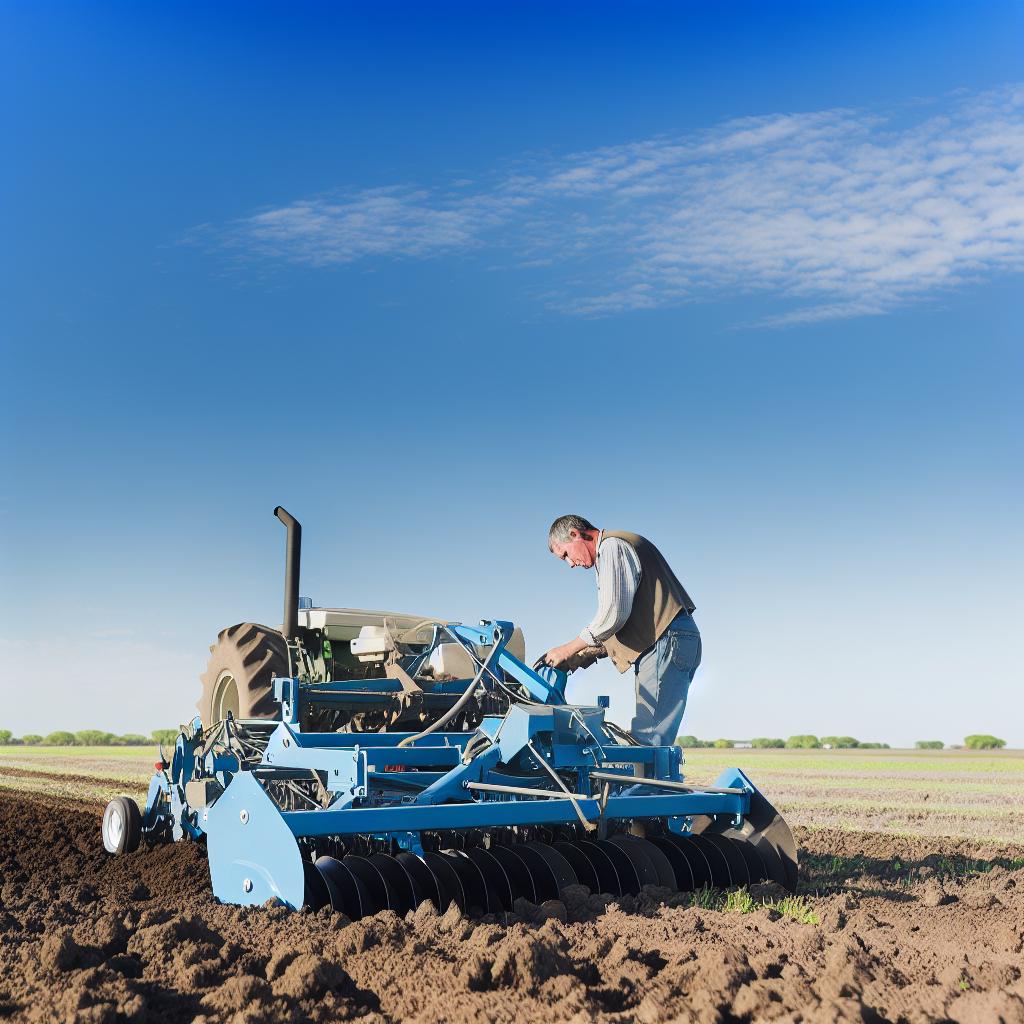
Comparative Analysis: Conservation Tillage vs. Conventional Tillage
Overview of Tillage Systems
Tillage practices significantly influence agricultural outcomes.
Conventional tillage involves the complete disruption of soil.
This method often leads to soil erosion and water loss.
In contrast, conservation tillage minimizes soil disturbance.
This approach retains moisture and improves soil structure.
Environmental Impact
Conventional tillage negatively affects the environment.
It can lead to increased soil erosion and nutrient depletion.
On the other hand, conservation tillage supports soil health.
It increases organic matter and promotes biodiversity.
Moreover, it enhances water retention in the soil.
Water Retention Capabilities
Water retention is a critical factor for crop yield.
Conservation tillage improves water infiltration rates.
This system creates a protective layer on the soil surface.
As a result, less water evaporates and more penetrates the ground.
Consequently, crops receive more consistent moisture levels.
Economic Considerations
Farmers often evaluate the cost-effectiveness of tillage systems.
While conventional tillage may require more machinery, conservation tillage can lower costs.
With reduced soil erosion, long-term productivity increases.
Thus, conservation tillage can enhance farm sustainability.
Implementation Challenges
Transitioning to conservation tillage poses challenges.
Farmers may initially face resistance due to traditional practices.
Additionally, they must adjust to new planting techniques.
Education and training can help mitigate these hurdles.
Ultimately, informed farmers can experience positive outcomes.
Best Practices for Implementing Conservation Tillage in Diverse Climates
Assessing Soil Conditions
Understanding local soil conditions is essential before implementing conservation tillage.
Start by testing soil moisture levels and composition.
Showcase Your Farming Business
Publish your professional farming services profile on our blog for a one-time fee of $200 and reach a dedicated audience of farmers and agribusiness owners.
Publish Your ProfileEvaluate the soil’s texture and structure to plan effective practices.
Additionally, consider the existing vegetation cover during assessment.
Collecting this data enables tailored conservation strategies.
Selecting Appropriate Tillage Methods
Different climates require specific tillage methods for optimal results.
For example, strip tillage works well in moist climates.
Conversely, no-till methods are ideal for drier regions.
Always align your choice with local climate characteristics.
Bringing in expert consultations can enhance decision-making.
Cultivating Cover Crops
Cover crops play a vital role in conservation tillage systems.
They improve soil structure and enhance moisture retention.
In flood-prone areas, cover crops reduce erosion risks.
Choose species that thrive in your specific climate conditions.
Furthermore, ensure they do not compete with main crops for nutrients.
Implementing Crop Rotation Strategies
Crop rotation boosts the effectiveness of conservation tillage.
Different crops influence soil health diversely, enhancing resilience.
In cooler climates, incorporate legumes to enrich soil nitrogen levels.
In warmer areas, rotating with deep-rooted crops aids moisture absorption.
Regularly adjust rotations based on seasonal changes and observations.
Utilizing Technology and Tools
Modern technology supports successful conservation tillage practices.
Implement precision agriculture tools to monitor moisture levels.
Utilize GPS-guided machines for efficient soil tillage and planting.
Data analytics can optimize decision-making regarding irrigation schedules.
Additionally, smartphone apps can help in tracking crop performance.
Monitoring and Adjusting Practices
Continuous monitoring is crucial in conservation tillage systems.
Regularly check soil moisture, crop yield, and vegetation health.
Be prepared to adjust practices based on monitoring findings.
Feedback from local agricultural extension services can be beneficial.
Adaptability ensures long-term sustainability and improved water retention.
Future Trends in Conservation Tillage and Water Management Techniques
Innovative Technology and Equipment
Technology will play a crucial role in advancing conservation tillage practices.
Farmers will increasingly rely on precision agriculture tools.
These tools will help optimize water usage and minimize waste.
Moreover, smart irrigation systems will enhance water retention in soil.
These systems will track moisture levels and adjust watering schedules accordingly.
Research and Development Initiatives
Ongoing research will drive innovation in conservation tillage methods.
Universities and agricultural organizations will collaborate to develop new techniques.
This partnership aims to address climate change impacts on water resources.
Additionally, studies will focus on improving soil health through tillage practices.
Policy and Regulation Changes
Government policies will evolve to support sustainable agricultural practices.
Regulations may incentivize farmers to adopt conservation tillage methods.
Incentives could include tax breaks and subsidies for eco-friendly practices.
Showcase Your Farming Business
Publish your professional farming services profile on our blog for a one-time fee of $200 and reach a dedicated audience of farmers and agribusiness owners.
Publish Your ProfileFurthermore, public awareness campaigns will promote the benefits of conservation tillage.
Community Involvement and Education
Local communities will play a significant role in conservation efforts.
Educational programs will empower farmers to implement effective tillage strategies.
Workshops will provide hands-on training for using new technologies.
Additionally, farmer networks will foster sharing of best practices and success stories.
Integration with Other Sustainable Practices
Conservation tillage will integrate with other sustainable farming practices.
Crop rotation and cover cropping will complement these efforts effectively.
Such integration will enhance biodiversity and improve overall soil health.
Consequently, these practices will lead to more robust ecosystems.
Additional Resources
THE MOVEMENT: Regenerative Ag | Leah Jørgensen Cellars
Effects on Soil Water Holding Capacity and Soil Water Retention …

